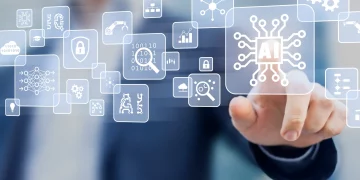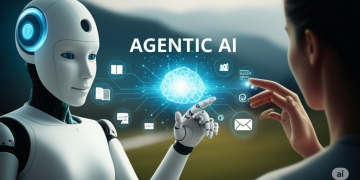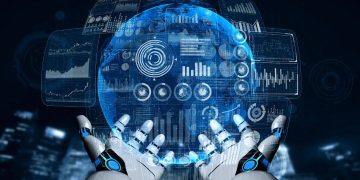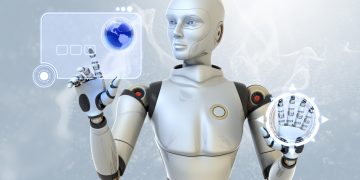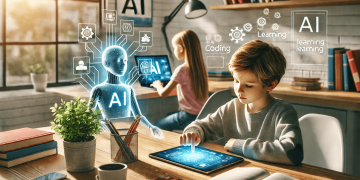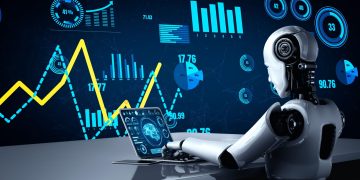Introduction:
In recent years, blockchain technology has garnered significant attention for its potential to revolutionize various sectors, particularly in terms of data security and transparency. At its core, blockchain is a distributed, decentralized ledger that securely records transactions and data without the need for a trusted central authority. Its ability to create tamper-proof records, ensure transparency, and enable secure peer-to-peer transactions has led many to believe that it could address some of the most pressing challenges in data management today.
However, while blockchain holds immense promise, questions remain as to whether it can truly solve the data security and transparency issues that businesses and consumers face. In this article, we will explore the potential of blockchain technology to improve data security and transparency, examine its limitations, and discuss whether it can be the ultimate solution to these critical concerns.
1. What is Blockchain Technology?
To understand how blockchain might address data security and transparency issues, it’s important to first understand the technology itself. Blockchain is a decentralized and distributed digital ledger that records transactions across a network of computers. Each transaction or data entry is stored in a block, and these blocks are linked in a chain, hence the name “blockchain.”
Key features of blockchain include:
- Decentralization: There is no single central authority controlling the blockchain. Instead, multiple nodes (computers) in the network validate and record transactions, making the system more resistant to manipulation and censorship.
- Immutability: Once data is recorded on the blockchain, it is extremely difficult to alter or delete. Each new block contains a reference to the previous block, creating a secure chain of information.
- Transparency: Blockchain’s public nature allows any participant in the network to access and view the entire transaction history. This can increase accountability and trust.
- Security: Blockchain uses cryptographic techniques to secure data. Transactions are encrypted, and each user must have a private key to access and make changes to the data.
These features position blockchain as a promising solution to the data security and transparency challenges that many industries face today.
2. How Blockchain Addresses Data Security
One of the most significant selling points of blockchain technology is its potential to enhance data security. Traditional centralized systems are often vulnerable to hacking, data breaches, and unauthorized access due to a single point of failure (the central server). In contrast, blockchain’s decentralized nature offers a more secure way to store and transmit data.
2.1. Decentralization and Reduced Single Point of Failure
In a traditional centralized system, data is typically stored in a central database controlled by an organization or institution. If hackers gain access to this centralized database, they can potentially steal or alter vast amounts of sensitive data. Blockchain, however, distributes copies of the entire database across many different nodes in the network. This means that no single point of failure exists—if one node is compromised, the data on the blockchain remains secure because it is replicated across the network.
Moreover, in a blockchain system, each transaction must be verified by multiple nodes before it is recorded. This consensus mechanism ensures that fraudulent or unauthorized changes are difficult to make, further enhancing data security.
2.2. Immutability and Tamper-Proof Records
One of the most compelling features of blockchain technology is its immutability. Once data is recorded on a blockchain, it cannot be altered or deleted. Each block contains a cryptographic hash of the previous block, creating an immutable chain of data. If someone were to attempt to alter data in a block, it would change the hash of that block, which would then invalidate the entire chain.
This immutability makes blockchain highly secure against tampering and unauthorized changes. In industries such as financial services, healthcare, and supply chain management, where data integrity is crucial, blockchain provides a level of security that is difficult to achieve with traditional databases.
2.3. Encryption and Privacy
Blockchain transactions are secured using advanced cryptography, which encrypts data and ensures that only authorized parties can access it. Each user on a blockchain network has a public key and a private key. The public key is used to identify the user, while the private key is used to sign transactions and prove ownership of data.
This system of encryption ensures that only the intended parties can access sensitive information. For example, in healthcare or banking, where privacy is paramount, blockchain can help protect personal data by allowing only authorized individuals or organizations to access it.
3. How Blockchain Promotes Transparency
Another significant advantage of blockchain technology is its potential to promote transparency. Because blockchain is a distributed ledger, every transaction recorded on the blockchain is visible to all participants in the network. This level of transparency can have a profound impact on industries where accountability and trust are essential.
3.1. Public Ledger and Traceability
One of the key features of blockchain is its public ledger. On a public blockchain, anyone can access and view the transaction history. This transparency ensures that all participants in the network have access to the same information, reducing the risk of fraud and misinformation.
For example, in supply chain management, blockchain can be used to track the origin and movement of goods, providing consumers with verifiable information about the products they purchase. This level of transparency helps build trust and accountability in industries where product quality, origin, and authenticity are critical concerns.
3.2. Decentralized Control and Reduced Fraud
Blockchain’s decentralized nature reduces the need for trust in a central authority, which in turn decreases the potential for fraud and corruption. In industries such as banking and government, where transparency is often a challenge, blockchain can offer a transparent alternative by ensuring that every transaction is recorded and visible to all network participants.
In financial systems, for example, blockchain can help eliminate double spending and ensure that all transactions are legitimate and recorded in real time. By reducing the potential for fraud and errors, blockchain promotes greater accountability and reduces the need for intermediaries.
3.3. Auditable and Transparent Records
Because every transaction on a blockchain is time-stamped and linked to the previous one, it creates a permanent and auditable record of all activities. This makes it easy to track the history of a particular transaction or piece of data, providing greater transparency for auditing purposes.
In corporate governance, for instance, blockchain can ensure that all financial transactions are transparent and accessible for auditing by regulators, stakeholders, and consumers. This can help reduce instances of financial misconduct and improve corporate accountability.

4. Challenges and Limitations of Blockchain in Data Security and Transparency
While blockchain has the potential to revolutionize data security and transparency, it is not without its limitations and challenges. The technology, while promising, is still in its infancy, and several hurdles need to be overcome before it can fully address these issues.
4.1. Scalability
One of the main challenges facing blockchain technology is scalability. Public blockchains like Bitcoin and Ethereum can struggle to handle large volumes of transactions at high speeds. As the number of transactions increases, the blockchain network can become congested, leading to slower processing times and higher transaction fees.
This scalability issue can be particularly problematic for applications that require high-speed transactions or large-scale data storage. While various solutions, such as sharding and layer 2 scaling solutions, are being developed, scalability remains a significant challenge for blockchain’s widespread adoption.
4.2. Energy Consumption
Blockchain networks, especially those using a Proof of Work (PoW) consensus mechanism (like Bitcoin), are known for their high energy consumption. Mining blocks requires significant computational power, which translates into large amounts of electricity usage. This energy consumption has raised environmental concerns and could hinder the adoption of blockchain in industries that prioritize sustainability.
However, alternative consensus mechanisms like Proof of Stake (PoS) are being explored to address these concerns, offering more energy-efficient ways to validate transactions on the blockchain.
4.3. Regulatory and Legal Concerns
Blockchain’s decentralized nature raises regulatory and legal challenges, particularly around issues of data privacy, intellectual property, and jurisdiction. Governments and regulators are still grappling with how to classify and regulate blockchain-based transactions and applications.
For example, in the European Union, blockchain-based systems must comply with GDPR (General Data Protection Regulation), which mandates that personal data can be modified or erased upon request. The immutability of blockchain poses a challenge in this context, as it is difficult to delete data once it is recorded on the blockchain. The legal status of blockchain records and transactions also remains unclear in many jurisdictions, which may slow its adoption in regulated industries.
4.4. Adoption and Integration Challenges
For blockchain to be effective in solving data security and transparency issues, it must be widely adopted across industries and integrated into existing systems. However, many businesses are reluctant to adopt blockchain due to concerns about cost, complexity, and lack of expertise. Blockchain technology is still evolving, and organizations may face challenges in integrating it into their current infrastructure, especially in industries with legacy systems.
Moreover, the fragmented nature of the blockchain ecosystem, with multiple competing platforms and standards, can create barriers to interoperability and collaboration across industries.
5. Conclusion: Is Blockchain the Ultimate Solution?
Blockchain technology offers significant potential to address the pressing issues of data security and transparency. Its decentralized, immutable, and transparent nature makes it a powerful tool for enhancing security, reducing fraud, and promoting accountability across industries. By providing a tamper-proof ledger, blockchain can create more secure and transparent systems for data management, improving everything from financial transactions to supply chain tracking.
However, while blockchain offers promising solutions, it is not a perfect fix. The technology faces challenges related to scalability, energy consumption, legal regulations, and widespread adoption. In addition, blockchain may not be a one-size-fits-all solution, as certain use cases may still require traditional systems alongside blockchain technology.
In conclusion, while blockchain has the potential to significantly enhance data security and transparency, it is unlikely to be the panacea for all the challenges we face. Its continued evolution, along with collaboration between technology developers, regulators, and industries, will determine how effectively it can address these issues in the future. Blockchain may not be the ultimate solution on its own, but it is certainly a critical part of the broader technological shift toward more secure, transparent, and decentralized data management.





